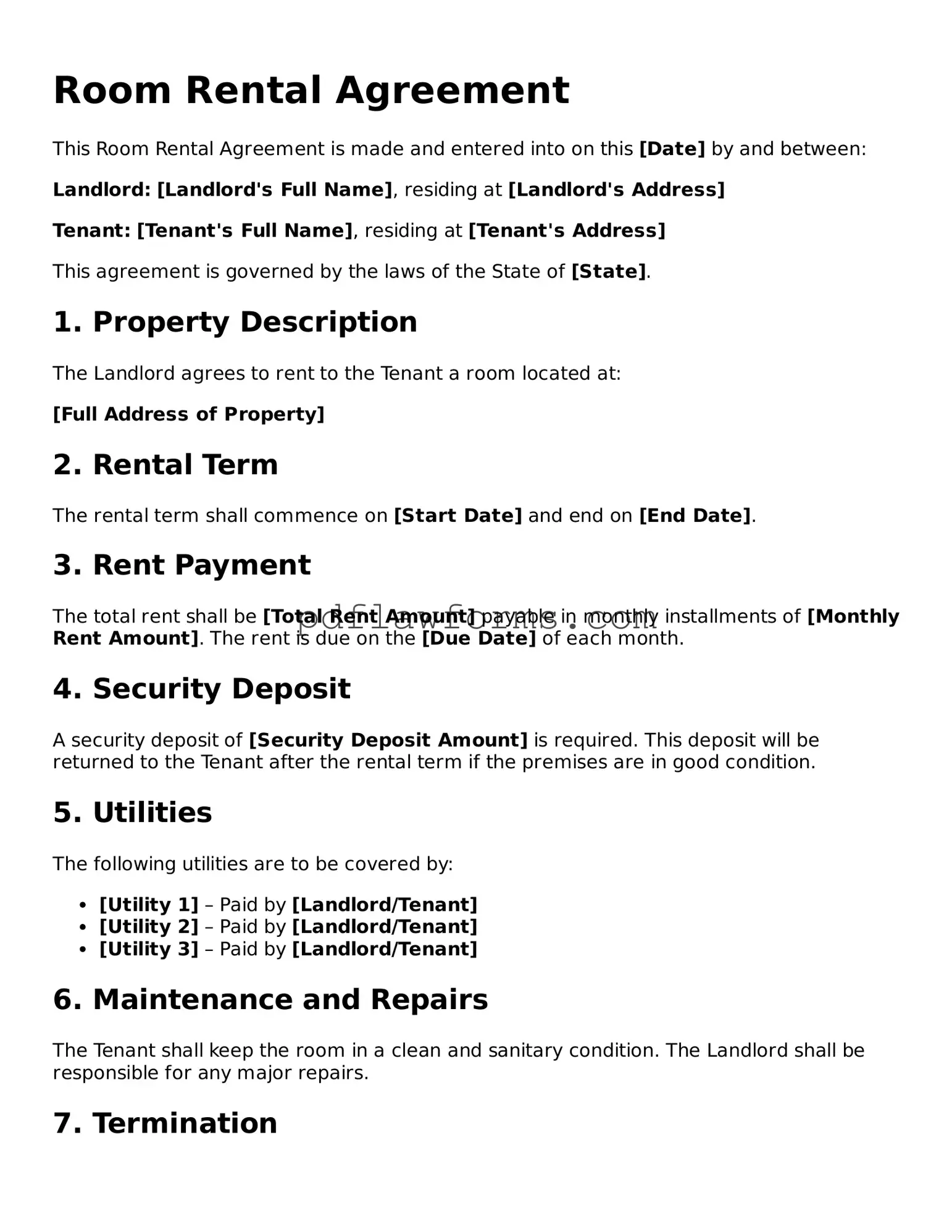Filling out a Room Rental Agreement can seem straightforward, but many people make common mistakes that can lead to misunderstandings later on. One frequent error is not providing accurate personal information. It's essential to include your full name, contact details, and the rental property's address. Missing or incorrect information can cause confusion and delays.
Another mistake often made is neglecting to read the terms and conditions thoroughly. Many people skim through the document, missing crucial details about payment schedules or maintenance responsibilities. Taking the time to understand these terms can prevent disputes down the line.
Some individuals forget to specify the rental period. Clearly stating the start and end dates of the rental agreement is vital. Without this information, both parties may have different expectations regarding the duration of the rental.
People sometimes overlook the importance of signatures. Failing to sign the agreement or getting the landlord's signature can render the document invalid. Both parties must sign to confirm their acceptance of the terms outlined in the agreement.
Another common mistake is not including the security deposit details. It’s important to specify the amount of the deposit, the conditions for its return, and how it will be handled. This helps avoid disputes when the rental period ends.
Some renters forget to document the condition of the room before moving in. Taking photos or noting any existing damage can protect you from being charged for those issues later. It's a simple step that can save a lot of trouble.
Another error is not communicating additional fees. If there are extra costs, such as utilities or maintenance fees, these should be clearly outlined in the agreement. This transparency helps prevent surprises when the bill arrives.
Lastly, people often fail to keep a copy of the signed agreement. It’s important to retain a copy for your records. Having this document on hand can be invaluable if any issues arise during or after the rental period.
